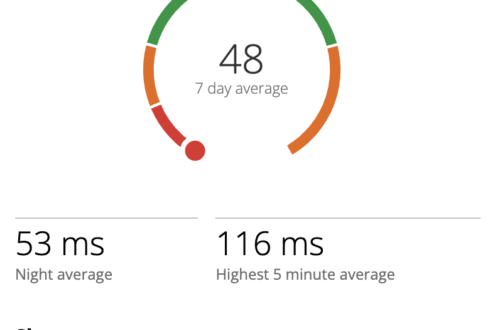Long-Term Training Programming
“The journey of a thousand miles begins with a single step.” – Lao Tzu
Sometimes, getting started feels impossible. When a goal looms too large and overwhelming, the only way forward is to break it into manageable pieces. That’s exactly what I plan to do here—take the complex world of long-term training programming and unpack it over a series of journal-like posts. Together, these entries might one day grow into a complete guide, but for now, I’ll focus on sharing my thoughts, experiences, and methods as they come.
Table of Contents
Starting with Definitions: Setting the Stage
Let’s begin with some key terms I’ll use throughout this journey. These are ideas that shape how I approach training—not carved in stone but rather tools that have served me well.
- ATP – Annual Training Program: This is my big-picture view of training across the year. It maps out major goals, like events or personal milestones. Joe Friel’s method of categorizing events as A, B, or C remains relevant despite the evolution of periodization theories. For me, this classification creates clarity—A events demand peak performance; B events are secondary goals; C events are low-stakes and often experimental.
- TSS – Training Stress Score: Borrowed from endurance sports, TSS is my preferred metric for gauging training load across disciplines. It sidesteps outdated myths like the “10% rule” of progression, which assumes endless linear growth—a fantasy, as anyone who’s been training for years can attest.
- Ditching Traditional Periodization: This might ruffle feathers, but I’ve moved away from classic periodization (and its trendy reverse counterpart). Instead, I lean into block periodization, a less rigid but highly focused approach. It’s been dismissed as unsuitable for non-elite athletes, but I see it as a golden opportunity for amateur athletes to address their weaknesses while staying adaptable.
Long-Term Training Programming: Dreams of the Ultra and the Reality of the Year
Big dreams fuel motivation. For me, these often revolve around ultra-endurance events—epic challenges that test not just physical capabilities but also mental resilience. These lofty goals stretch far beyond the confines of a single year, sometimes spanning four or five years in their preparation. However, the pathway to these achievements is not a straight line; it’s a winding journey filled with detours, adaptations, and unexpected challenges.

From Vision to Action: Setting the Yearly Framework
While my ultimate aspirations may span years, I ground my planning in a one-year macrocycle. Why? Because a single year offers enough time to establish meaningful progress while remaining flexible to life’s inevitable curveballs. A well-structured macrocycle serves as the foundation for the larger dream, breaking it into attainable, measurable steps. This macrocycle includes:
- Strategic blocks of training, each designed to build specific skills or capacities.
- Planned peaks and recovery phases, ensuring sustainable growth.
- Adaptable goals, recognizing that life doesn’t always cooperate with rigid plans.
This approach is inspired by the concept of the Annual Training Program (ATP), which aligns training priorities with key events. Whether it’s an ultra-marathon, a long-distance bike ride, or even a personal milestone, ATP helps contextualize the year within the larger vision.
Building in Flexibility: The FLEX Method
As much as I’d love to meticulously plan every detail leading up to my dream event, I’ve realized that anchoring everything to a single “make-or-break” moment years in the future is a recipe for burnout—or worse, disappointment. Instead, I embrace what I call the FLEX Method: an approach that prioritizes adaptability over rigidity.
Rather than forcing everything to revolve around one event, FLEX emphasizes progress that aligns with current realities. For example:
- A missed training week doesn’t derail the program; it becomes an opportunity for recalibration.
- Smaller, intermediate events are treated as stepping stones, not ultimate goals.
- Adjustments are made dynamically, allowing training to flow with the rhythm of life.
This approach is heavily informed by my experiences and the wisdom of resources like Matt Fitzgerald’s “Training Plans for Endurance Athletes”, which highlight the importance of tailoring training to fit the individual’s life rather than forcing life to fit the plan.
Balancing the Dream with Day-to-Day Realities
One of the biggest challenges with long-term programming is balancing the dream with the day-to-day grind. Your notes perfectly encapsulate this struggle: balancing the excitement of ultra-endurance dreams with the realities of a 52-week calendar. These realities include:
- Life Stressors: Work, family, and health demands often take precedence over a perfectly scheduled long run.
- Unexpected Interruptions: Illness, injury, or even just a rough week can force a shift in priorities.
- Adaptation Periods: Planned “buffer weeks” allow for recovery or recalibration when things don’t go as planned.
I’ve also found value in the “Long-Term Athlete Development” (LTAD) framework, which promotes a sustainable, lifelong approach to training rather than a single-minded pursuit of short-term performance. By weaving my dream events into a broader framework of personal growth, I avoid the trap of over-attachment to any single race or goal.
A Vision with Built-In Milestones
Each year within my multi-year plan serves a dual purpose:
- Building the physiological and psychological foundations for future challenges.
- Celebrating interim accomplishments through milestone events—whether a “B-priority” trail race or a challenging training weekend.
These milestones are critical. They’re not just checkpoints; they’re moments to recalibrate, reflect, and reignite the passion for the bigger picture.
The Macrocycle as a Laboratory
One of the joys of the annual framework is that it allows experimentation. Whether testing out new recovery strategies, tweaking block durations, or introducing new metrics like TSS (Training Stress Score), the year becomes a laboratory. Every success, failure, and adjustment contributes to the larger vision, shaping not just my fitness but also my approach to training.
Keeping the Dream Alive
The beauty of dreaming big is that it pulls you forward. But the reality of the year—the demands, the limitations, and yes, the joys—grounds you. The key is finding harmony between these two forces. By focusing on what can be done within a year, while keeping an eye on the multi-year horizon, I’ve learned to enjoy the process as much as the outcome.
Why Blocks?
Blocks are the backbone of this system, the foundation on which a sustainable and effective training plan is built. They offer a structured yet flexible way to organize training by focusing on one or two primary objectives at a time. Unlike rigid, one-size-fits-all programs designed for professional athletes with ample recovery resources, block periodization acknowledges the realities of everyday life. For the amateur athlete juggling work, family, and social obligations, this approach provides clarity and focus without overwhelming rigidity.
The Beauty of Focus
Each block in this system has a singular purpose: focus. Whether the goal is to build endurance, increase strength, improve speed, or refine technical skills, the idea is to narrow the scope of your efforts. Instead of trying to do everything at once and achieving mediocre results, blocks allow you to double down on what truly matters in that phase of training.
For instance:
- Endurance Block: Long, steady-state runs or rides might dominate the program, while strength training takes a backseat.
- Strength Block: Heavy lifting and explosive movements become the priority, with cardio limited to maintenance levels.
- Skill Block: Focus shifts to mastering form or technique, whether it’s swim strokes, running cadence, or lifting mechanics.
By honing in on just one or two goals, the process becomes more efficient, and progress is easier to track. Each block sets the stage for the next, creating a seamless progression toward long-term objectives.
Breaking Blocks into Mesocycles
A block is typically divided into mesocycles, which last about four weeks. These mesocycles are where training rhythms start to take shape. Traditional patterns like 3:1 (three weeks of progressively increasing load followed by one week of deloading) are a popular framework. However, life often disrupts these idealized plans.
From my experience, the rigid application of these ratios is less effective for amateur athletes. Why? Because fatigue doesn’t always accumulate predictably. Stress from work, poor sleep, or unexpected personal events can have the same impact on your body as an intense workout. This is where flexibility comes into play.
Flexibility in Block Periodization
One of the core strengths of block periodization is its adaptability. Rather than being chained to a specific workload or progression, you can adjust the plan to suit your current reality. Matt Fitzgerald’s concept of training aligned with life stress highlights an essential truth: your body doesn’t distinguish between stress from training and stress from daily life. Both contribute to overall fatigue and recovery needs.
For example:
- A planned high-load week during an endurance block might need to be scaled back if work deadlines or family obligations pile up.
- A deload week could be shortened if recovery comes quicker than expected, keeping momentum high.
- Recovery weeks might focus on active modalities like yoga or swimming rather than complete rest, depending on how you feel.
This adaptability doesn’t just keep the plan manageable; it also prevents burnout and overtraining.
Why Not Traditional Periodization?
You might wonder why I’ve moved away from more traditional periodization models, such as linear or reverse periodization. The answer lies in their lack of flexibility and relevance to real-world conditions. These systems often assume predictable progress and fixed timelines, which rarely align with the realities of non-professional athletes. Block periodization, on the other hand, embraces uncertainty. By breaking training into focused chunks, it becomes easier to adapt without losing sight of long-term goals.
Seeing Progress in Blocks
One of the most rewarding aspects of block periodization is how it simplifies the process of tracking progress. With each block dedicated to just one or two primary goals, the noise of competing priorities fades away, leaving clear markers of success. This clarity not only keeps training organized but also provides measurable results that are easy to evaluate and adjust.
Clear Metrics for Tangible Feedback
By narrowing the focus, each block becomes a concentrated effort toward specific outcomes. For example:
- In a strength block, progress might be measured through increased lifting capacity, such as heavier weights, more repetitions, or better form under load.
- During an endurance block, success could be gauged by longer distances, faster times, or even improvements in metrics like heart rate variability or lactate threshold.
These clear, objective markers of improvement make it easier to see where you’ve been and where you’re headed. It’s no longer about vague notions of “getting better”; you can pinpoint exactly how your training is paying off.
Psychological Benefits of Visible Progress
Tangible proof of progress is an incredible motivator. It transforms the abstract idea of improvement into something concrete and immediate. For example, seeing your run times drop or hitting a personal best on the squat rack gives you a sense of accomplishment that fuels further effort. Each milestone achieved within a block creates momentum, making the larger goals feel not just attainable but inevitable.
Additionally, having distinct metrics for each block helps prevent the frustration of plateauing. If progress slows during one block, you can reassess and make targeted adjustments without derailing the overall program. It’s a more proactive and empowering approach to training.
Learning from the Numbers
Blocks also serve as a feedback loop. By reviewing your progress at the end of a block, you gain valuable insights into what’s working and what needs adjustment. For example:
- Did your endurance improve as expected? If not, perhaps the training volume or intensity wasn’t optimal.
- Were gains in strength accompanied by unexpected fatigue or aches? This might indicate a need for more recovery time in future blocks.
This iterative process turns each block into both a training phase and a learning experience, refining your approach for the next cycle.
Aligning Progress with Long-Term Goals
Finally, tracking progress in blocks ensures that short-term gains align with long-term objectives. Each block builds upon the last, creating a staircase of achievements leading to your ultimate goals. For instance:
- Improvements in aerobic capacity during an endurance block lay the groundwork for faster recovery between sets in future strength-focused phases.
- Gains in core strength or stability contribute to injury prevention across all disciplines.
This integration ensures that every effort is purposeful, connecting today’s improvements to tomorrow’s ambitions.
Progress: The Reward and the Fuel
Ultimately, seeing progress in blocks is both the reward for your hard work and the fuel to keep going. It’s a reminder that even the loftiest goals are achieved one step—or one block—at a time. By focusing on clear, measurable outcomes within each block, you maintain a sense of control and confidence in your training journey, knowing that every phase is moving you closer to your best self.
Building Momentum
Blocks aren’t just about physical adaptation—they’re also psychological tools. Completing a block feels like an accomplishment, a milestone on the road to bigger goals. This sense of achievement builds momentum and keeps motivation high. Instead of getting lost in the enormity of a multi-year plan, blocks let you focus on the here and now, making training both manageable and rewarding.
By designing training around blocks, you create a system that prioritizes focus, adaptability, and measurable progress. It’s not about perfection; it’s about sustainability and making every phase of training count. This modular approach ensures that you can stay on track, even when life doesn’t go as planned.
Weekly Magic: Microcycles and Training Units
Now we’re getting into the nitty-gritty: microcycles. These are the one-week plans that, in my experience, are where the real work happens. Everything above—the mega- and macrocycles, the blocks and mesocycles—is just a prediction. The microcycle is where theory meets reality. And within these weeks, it’s the individual training units that carry the day.
Each unit needs to serve a purpose, whether it’s building endurance, sharpening strength, or focusing on recovery. The key is balance. As much as I love pushing limits, I’ve learned that overloading consistently leads to injury, burnout, or worse. Recovery isn’t optional—it’s a priority. In fact, some of my hardest lessons have been about recognizing when to scale back.
Summary: The Hierarchy of Training Cycles
Understanding the structure of training cycles ensures clarity and purpose at every stage:
- Megacycle (4-5 years): Encompasses multiple macrocycles targeting overarching goals.
- Macrocycle (1 year): Focused on yearly milestones and foundational objectives.
- Mesocycle (4 weeks): Aims to develop specific attributes like endurance, strength, or recovery.
- Microcycle (1 week): Weekly plans aligned with mesocycle goals.
- Training Units: Individual sessions designed to maximize physiological adaptations while prioritizing recovery.
Example: A microcycle during an endurance block may include two high-intensity sessions, one long run, and active recovery days.
Adapting to Life: Flexibility Over Perfection
Here’s the truth: no training plan survives the unpredictability of real life. A bad night’s sleep, a surprise work deadline, or a family emergency can derail even the best-laid plans. That’s why I’ve shifted my mindset from rigid adherence to adaptation. Missed a long run? Replace it with a shorter one later in the week. Feeling burnt out? Focus on recovery and come back stronger. As long as I’m consistent over time, the occasional adjustment doesn’t derail the bigger picture.
Wrapping Up: A Journey Worth Sharing
This post is just the beginning of what I hope will be a long and rewarding exploration of training programming. In future entries, I’ll share:
- How I structure specific microcycles
- Tools and metrics for measuring progress
- Real-life examples of adapting to setbacks
For now, my biggest takeaway is this: long-term training programming isn’t about perfection—it’s about persistence. It’s a balance of dreaming big while taking small, intentional steps forward. The journey is long, but with the right mindset, it’s incredibly fulfilling.



One Comment
Pingback: